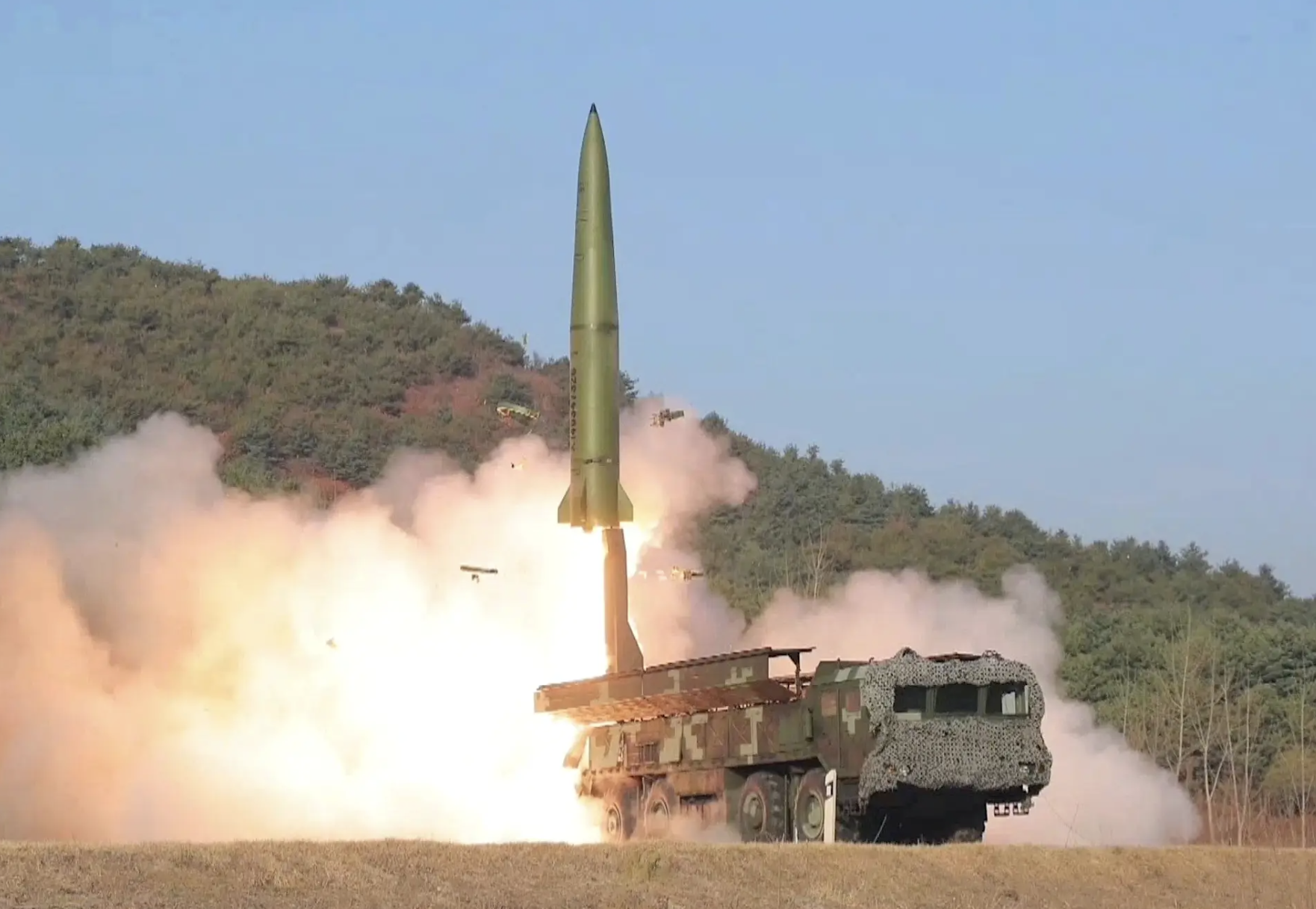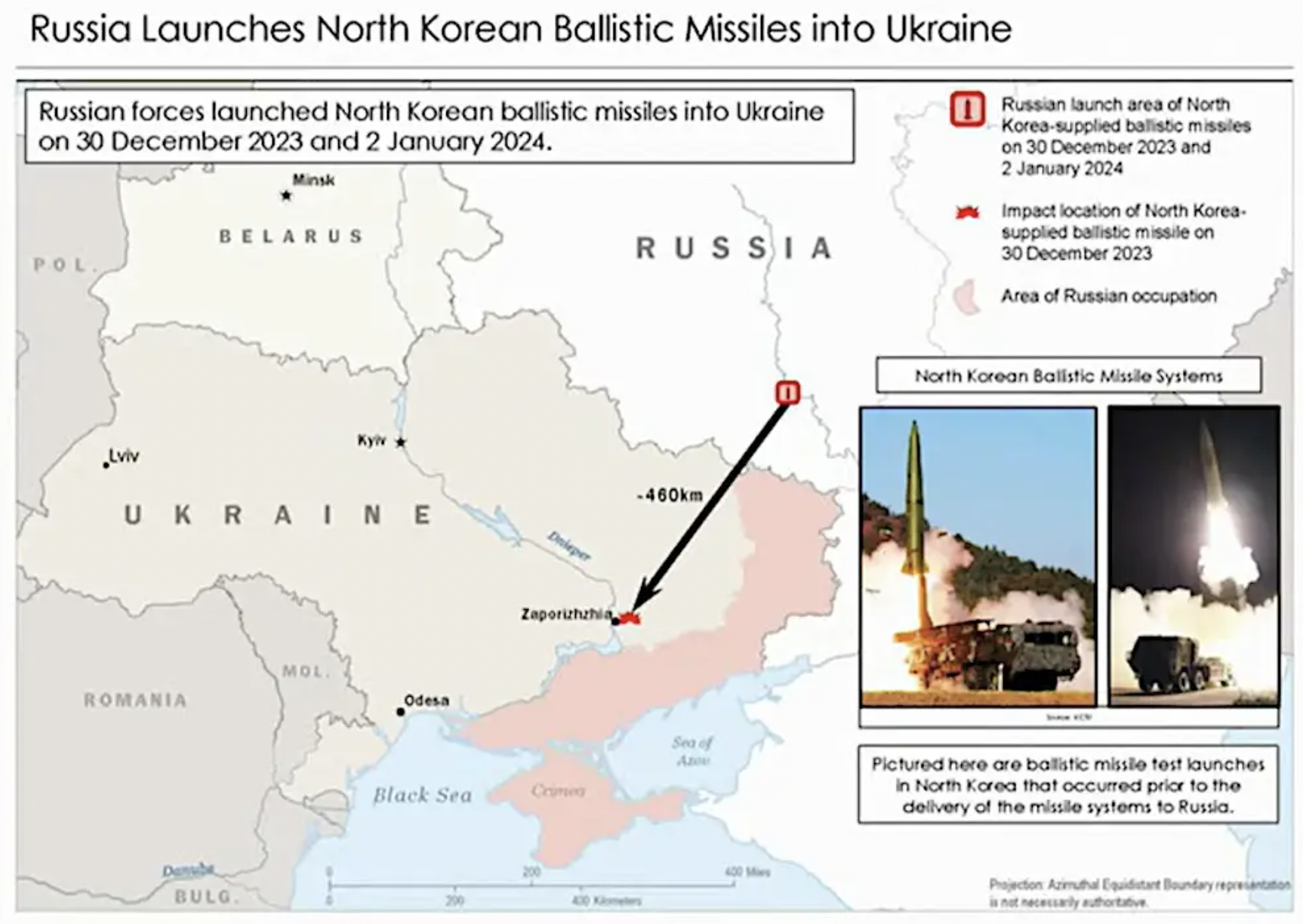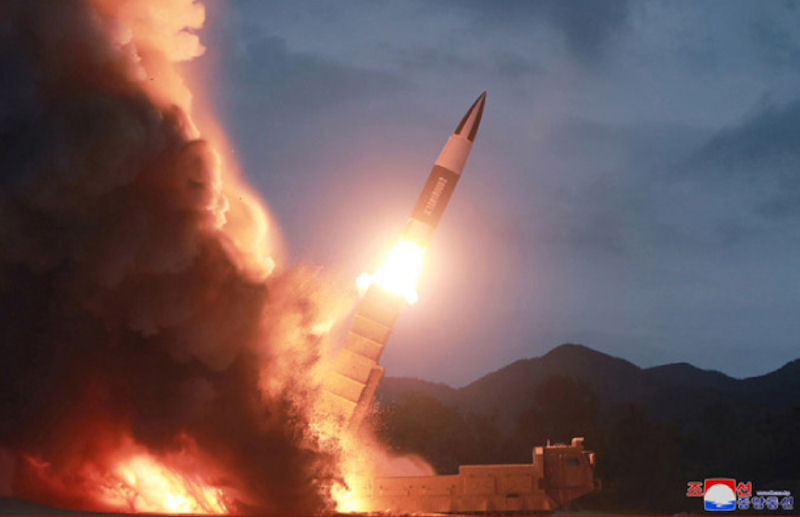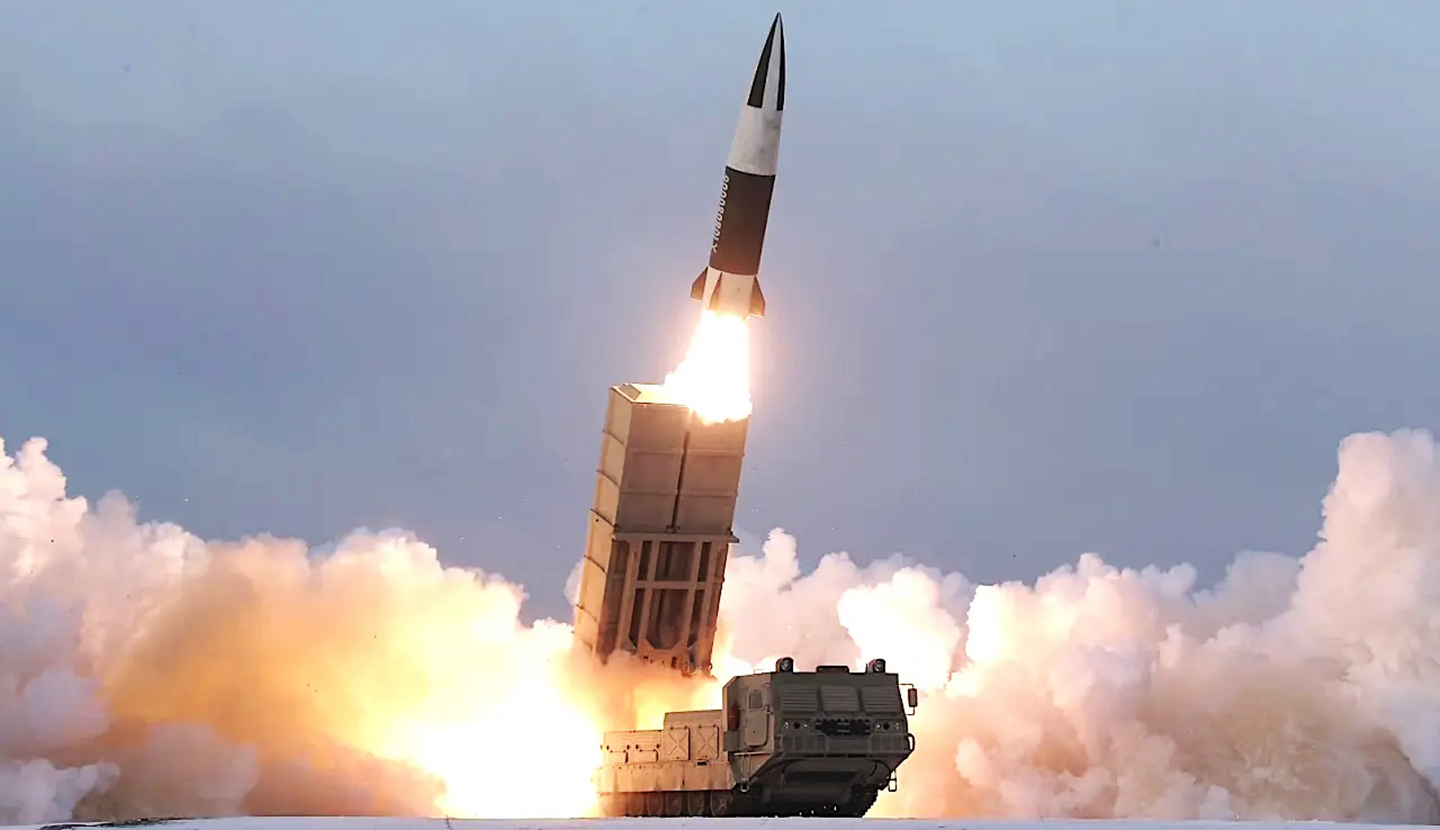A short-range ballistic missile (SRBM) produced by North Korea and recently used against Ukraine by Russia relied on more than 290 foreign-sourced components, many of them originating from U.S. manufacturers. This is the alarming result of a study by Conflict Armament Research (CAR), a U.K.-based investigative organization.
More concerning, perhaps, is the fact that according to CAR’s study — which you can read in full here — those U.S. components were manufactured within the last three years. This raises clear questions about the efficiency of United Nations sanctions placed on North Korea which are intended, above all, to disrupt its wide-ranging ballistic missile development program.
The CAR report is based on wreckage from a single North Korean-made KN-23 or KN-24 SRBM that was recovered in the Ukrainian city of Kharkiv, on January 2. This was among the first confirmed instances in which a North Korean missile was used by Russia in the conflict, something that had long been predicted as the two countries moved closer together after Moscow launched its full-scale invasion of Ukraine.

Earlier this year, John Kirby, the top spokesperson for the White House’s National Security Council (NSC), said: “Information indicates that the Democratic People’s Republic of Korea [the official title of North Korea] recently provided Russia with ballistic missile launchers and several ballistic missiles.”
Kirby said that, in return, North Korea would receive fighters, surface-to-air missiles, armored vehicles, and other materiel and technology transfers from Russia. Meanwhile, the delivery of North Korean-made ballistic missiles to Russia followed the supply of significant quantities of artillery ammunition from the same source.

As for the KN-23 and KN-24 SRBMs, these are reported to have maximum ranges of around 435 miles (700 kilometers) and 250 miles (400 kilometers), respectively. While the KN-23 is very similar in appearance to the Russian Iskander-M, the KN-24 appears to have more in common, at least outwardly, with the U.S. Army Tactical Missile System (ATACMS), examples of which have been supplied to Ukraine.

A CAR field investigation team examining the remnants of the missile found components that “bear the brands of companies based primarily in the United States.” Overall, 75 percent of the components documented were linked to U.S. companies, with 16 percent linked to European ones, and nine percent connected with companies based in Asia.
The names of the companies — 26 in all — have been withheld by CAR, but the organization says it’s requested information from the manufacturers to trace the components’ provenance.
As for the components themselves, the investigators say that these are primarily electronic and that most of them relate to the missile’s navigation system. Accurate navigation systems for ballistic missiles are notoriously difficult to perfect while obviously being vital to the accuracy and overall efficiency of these weapons.

Date codes on some of the components also revealed that the missile in question cannot have been manufactured before March 2023, CAR states. That suggests that the missile may well have been produced specifically to fulfill a Russian order, although this cannot be confirmed.
While this may well be the first concrete evidence of North Korea relying upon specific Western technologies for its missiles, it’s symptomatic of the difficulty in restricting access to these vital components, even when sanctions are in place.
“North Korea’s ability to produce and transfer advanced weapons, while acquiring material internationally to fuel its missile program in spite of long-standing United Nations sanctions, is the latest evidence of countries undermining global non-proliferation regimes,” the CAR report states.
The same goes for Iran and for Russia itself. Since the start of the full-scale invasion, the opportunity to examine Iranian and Russian weapons, including missiles and drones, has also revealed the presence of numerous Western-made components, especially semiconductors.
As regards Iran, specifically, The War Zone has highlighted in the past how Russia could also bolster its ballistic missile arsenal by turning to Tehran, too.
As well as revealing significant loopholes that allow the export of Western components to these countries, via commercial channels, there is growing evidence that all three of these nations’ arms industries currently also lack the ability to furnish certain critical items — or at least in the scale required.
Regardless of these limitations, evidence such as the North Korea-made SRBM, as well as Iranian-made drones and Russian missiles and aircraft, proves that these sanctioned regimes are nonetheless able to produce advanced weapons. In the case of North Korea, specifically, it suggests that the country’s expanding arsenal of varied missiles — of ever-increasing range and capability — is enabled, in part, by large amounts of Western technology.

North Korea’s ballistic missile developments were supposed to have been kept in check by United Nations sanctions that have been in place since 2006 and have become more stringent since, although clearly with little to no effect.
The current situation, CAR contends, is far from an accident, with Pyongyang instead having “developed a robust acquisition network capable of circumventing, without detection, sanction regimes that have been in place for nearly two decades.”
The secondhand marketplace is likely one major source for embargoed components.
As the war in Ukraine grinds on, the opportunity to examine more North Korean missiles in detail will likely continue, not to mention Iranian-made systems and weapons from Russia’s domestic production lines.
While the latest evidence from the North Korean missile does raise questions about Pyongyang’s ability to produce such advanced weapons independent of access to foreign components, the fact that supply channels seem fairly immune to strict sanctions should clearly be a major worry.
Contact the author: thomas@thewarzone.com
